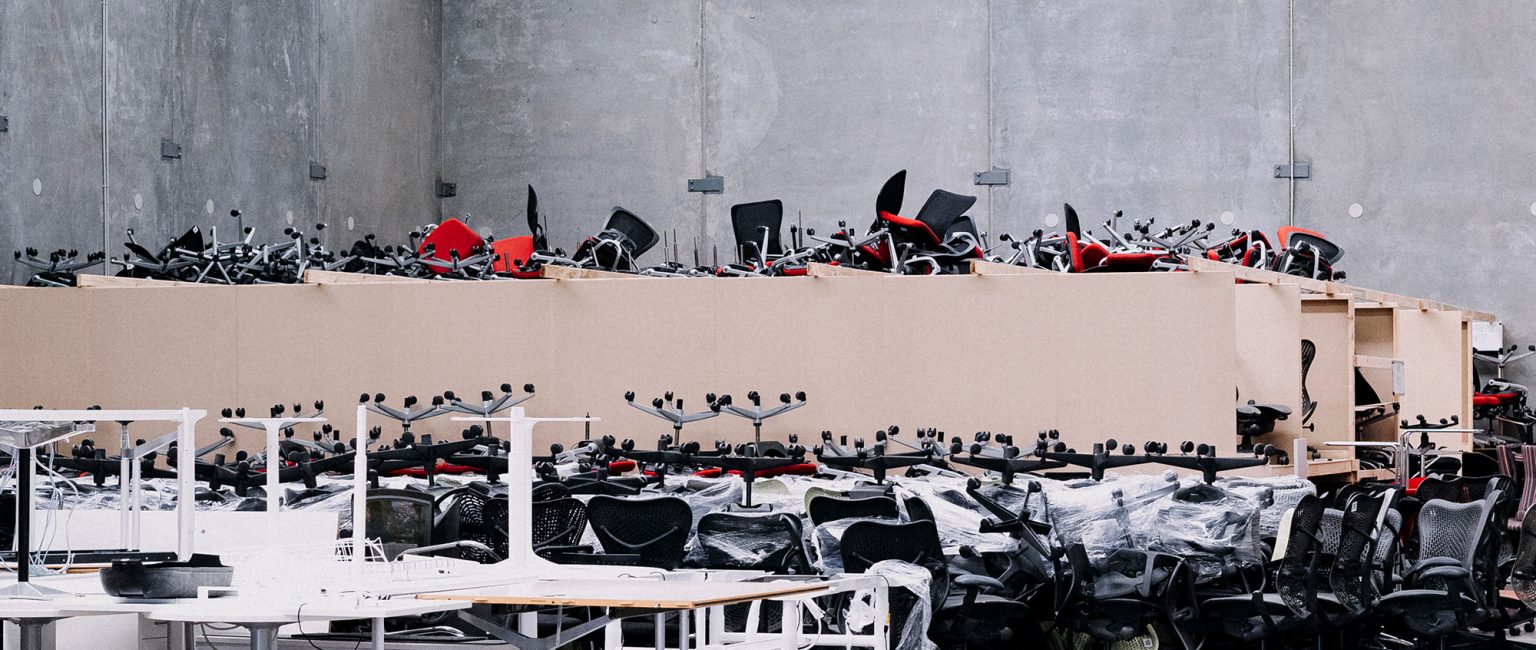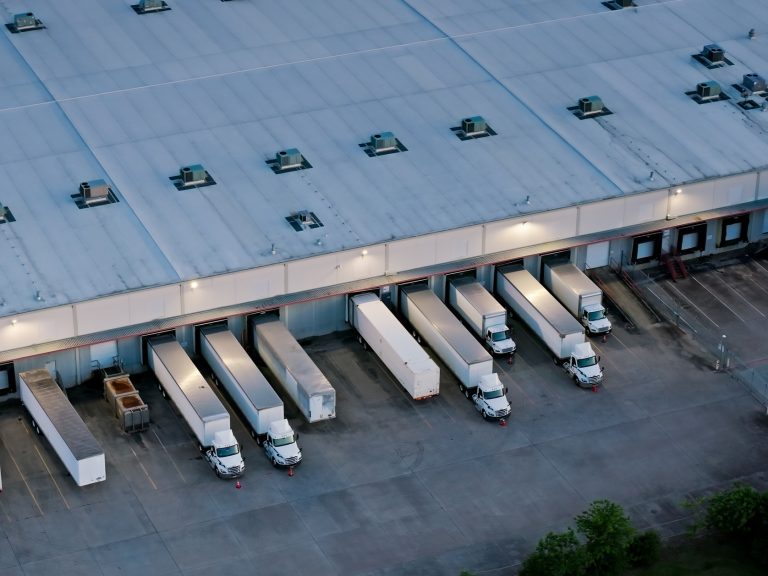Total waste: How we can prevent the mammoth office furniture dump

After two years of empty office floors, companies are downsizing, relocating or refurbing to cater for a more agile workforce. The downside? Hundreds of tonnes of strip-out waste dumped in landfill every single day.
Businesses across Australia’s capital cities generate more than 145,000 tonnes of strip-out waste each year, according to the Better Buildings Partnership, a collective of Sydney’s largest property owners. And that was pre-pandemic.
Approximately 21% of this waste is loose furniture and another 14% is cabinetry, both highly reusable, with the remainder being metals, plasterboard, glass, carpet, hard fill and ceiling tiles.
And as much as 80% of it all ends up in landfill, much of it in perfectly good condition.
It’s an alarming statistic, especially with more companies making moves to accommodate a more flexible workforce. The percentage of Australians working from home has jumped from 8% to 40% in the past two years, with remote working expected to continue at high levels, according to a recent Productivity Commission report.
Justin Hatchett, chief executive officer of Green Furniture Hub which resells furniture through its virtual marketplace, said the pandemic has “certainly brought on a wave of change“.
His company is seeing a rise in small-to-medium sized organisations reducing the size of their tenancies or seeking different spaces with lower rent or good incentives, with others closing completely to support a remote work-from-home model.
Larger organisations, meanwhile, are refurbing or relocating to incorporate more collaborative spaces rather than traditional set-ups with permanent work points for employees.
“All this activity, along with a growing commitment to sustainability, is generating opportunities for businesses like ours,” Mr Hatchett said.
Responsibility from above
Recent years have seen big property groups think more proactively about how they will reduce office furniture waste.
When National Australia Bank moved out of its 40-storey tower at 500 Bourke Street in Melbourne, it gave landlord ISPT the chance to test its recycling initiative on a grand scale.
NAB left behind 15,200 pieces of furniture, 42,000sqm of ceiling tiles, 173 whitegoods and about 1000 blinds. But at least 85% of this has been committed to reuse, fetching $200,000 that ISPT will donate to the Property Industry Foundation’s Furniture Fund to build a home for displaced youth in Shepparton, Victoria.
Nicole Ward, general manager of commercial services at ISPT, described the initiative as a “wonderful opportunity” and said there are plans to roll out the Sustainable Furniture Scheme across ISPT’s property portfolio.
“We hope that the scheme sparks an industry-wide conversation about how we can work together to address this issue of waste,” she said.

More companies are now thinking proactively about how they will manage left-over furniture and surplus resources. Picture: ISPT
The federal government is also trying to help. In March 2021 it gave a grant to Good Environmental Choice Australia, Edge Environment and Global Product Stewardship Council to create a consortium to divert commercial furniture from landfill.
The Fit for Office consortium is currently researching options to drive the responsible management of commercial furniture in Australia through reuse and repair, improved product design and enhanced recycling processes.
Companies taking control
Reducing office waste is also the responsibility of companies, though experts say it takes planning at the beginning to reduce waste at end-of-use.
Ryan Collins, head of circular programs at Planet Ark which runs the depository Business Recycling, said one of the core principles of the circular economy is to keep products at their highest value for as long as possible.
This means sourcing quality items that will age well and have a better chance of reuse, and using brands that offer easy component replacement.
“Businesses should always consider reuse and repair options for equipment and furniture first before recycling,” he said.
Secondly, companies should appoint a person to project manage the sustainability elements of a move — and give them appropriate lead-times, especially if they’re donating or selling furniture, or buying second-hand furniture for the new office.
“Rash decisions are often made when there’s little time to plan and prepare, which can cost the company more money and result in poor environmental outcomes,” Mr Collins said.

Recycling or reselling products is an easy way to reduce a company’s move costs. Picture: Green Furniture Hub
Other sustainable strategies can include taking some of the fit-out to the new premises, offering items to staff, reselling high value items, donating items to charities or small businesses, material recycling, and sourcing high-quality pre-loved furniture.
“The opportunities to create a more circular economy are always there, it just requires care and collaboration,” said Jorge Chapa, head of market transformation at Green Building Council of Australia.
“Look for opportunities to reuse furniture — most is in good condition, and can be brought forward with little effort.”
Furniture hire may also be worth considering, especially for short-term scenarios, though this option can become an expensive option with time.
Transitioning to a circular economy
Mr Hatchett at Green Furniture Hub expects plenty of change in coming years as we transition to an economy based on circular principles.
This will include improved product designs that use recycled content and allow for end-of-life recycling; furniture brands offering take-back programs; and even ‘furniture-as-a-service’ models as companies rethink the pros and cons of ownership.
“The role of reuse marketplaces will grow, as will recycling options for all resource streams within a fit-out. You will also see policy-led decisions that incentivise recycling and reuse via increases in landfill costs,” Mr Hatchett said.

With recycling rates in office strip-outs as low as 20%, the majority ends up in landfill. Picture: ISPT
Mr Collins at Planet Ark said companies should ask themselves if it’s necessary to own the equipment and products they use.
“Outsourcing such services may be more practical, but they also have huge environmental benefits as the upkeep and responsible disposal of the products at their end of life lies with the service provider who is more likely to invest in reuse and recycling materials,” he said.
Over time, Mr Chapa believes furniture will become something that comes with a commercial fit-out, rather than something the tenant deals with.
“This makes sense,” he said. “There are economies of scale and benefits from managing fit-outs that are fully furnished compared to refitting every space every time someone occupies it.”







